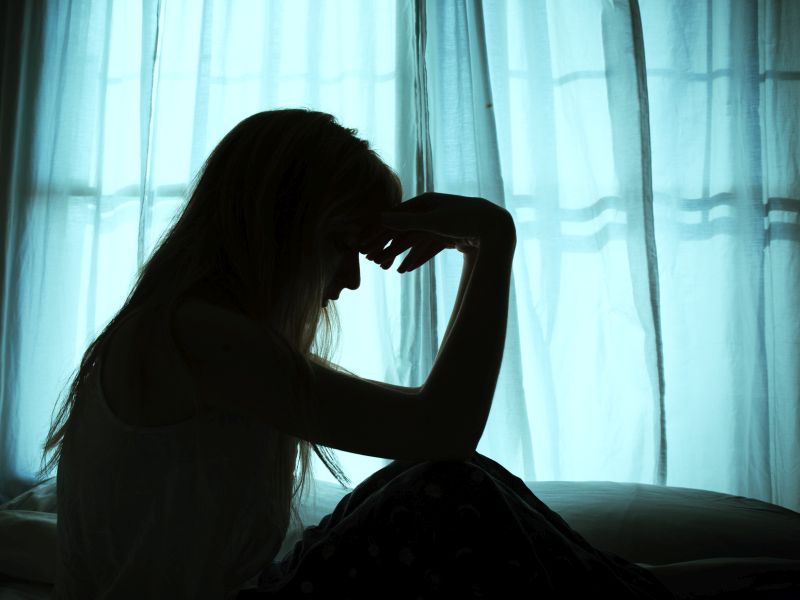Instagram 'Self-Harm' Posts Give Rise to Copycat Behavior
By Serena GordonHealthDay Reporter

TUESDAY, June 4, 2019 (HealthDay News) -- Being an Instagram influencer isn't always a good thing. New research found that vulnerable young people who see online posts of self-harm -- like cutting -- may copy those destructive behaviors.
Almost one-third of teens and young adults who reported seeing self-harm posts on Instagram said they had performed the same or similar self-harming behavior afterwards.
Seeing these images online "normalizes" the behavior, according study senior author Dan Romer. He's research director of the Annenberg Public Policy Center at the University of Pennsylvania.
"Vulnerable kids think, 'Well, maybe that's something I should consider doing,'" he said.
Romer noted that this problem goes beyond just Instagram. "Kids who don't have mental health problems wouldn't repeatedly self-harm. It's vulnerable kids trying to relieve their distress," he explained. But he added that this study indicates that these types of social media posts can be harmful to teens and young adults.
The researchers initially became concerned about the potential effects of self-harm posts after a British father said his 14-year-old daughter had looked at explicit self-harming images on Instagram before killing herself. The social media site has since said that graphic depictions of self-harm aren't allowed in posts.
Self-harm typically refers to cutting, but can include other behaviors such as burning, hitting or head-banging. Self-harm isn't usually suicidal, but people who engage in self-harm are at increased risk for suicide, the researchers said. Posts depicting self-harm on Instagram commonly show mild or moderate injuries. But some posts included bleeding flesh wounds from cutting an extremity.
Instagram has more than 500 million daily active users and more than 1 billion monthly users, according to the researchers. The social media site is very popular with young people.
The study included more than 700 teens and young adults (ages 18 to 29). Eighty percent of the study volunteers were women. They were interviewed twice, a month apart. The interviews occurred in May and June 2018, before Instagram said it would try to reduce graphic self-harm posts.
Almost half -- 43% -- said they had seen at least one self-harm post on Instagram. Many reported seeing more than one such post. Most -- 80% -- of those who reported seeing these posts said their exposure to them was accidental.
Almost two out of the three people surveyed said that the self-harm posts were emotionally disturbing.
Six out of 10 who saw these posts said they thought about how it might feel to do something like that. And 33% of those exposed to the self-harm posts said at the first interview that they had done the same or similar harm to themselves as a result of seeing the post.
During the second interview a month later, people who said they'd seen a self-harm post during the first interview were more likely to have self-harmed than people who hadn't seen such a post.
Romer noted that the study cannot prove that seeing the posts directly led people to self-harm.
But, he said, "Kids who see these posts and are vulnerable probably aren't going to get a good message."
Romer said parents need to be concerned if they notice behaviors linked to depression in their kids, such as being online all the time, isolating themselves and sadness. These are kids that might be more susceptible to things they see online.
Since it's nearly impossible to completely ban access to social media, Romer said open communication with parents is even more crucial for today's young people.
Dr. Alan Geller, a psychiatrist at NewYork-Presbyterian's Gracie Square Hospital in New York City, agreed that communication is key.
"Adolescents have to understand your limits and expectations," said Geller, who wasn't involved in the study. "It's like limit-setting for anything -- alcohol or cigarettes or, now, marijuana. Children and teens have access to these risks and parents have a responsibility to set limits and clearly communicate those limits."
And, he said, parents need to routinely check in with their teens about these challenges. Geller suggested doing so at least once a week.
Like Romer, Geller said that parents need to be on the lookout for signs, including repeated self-harm, that a teen or young adult is depressed or suicidal. If parents or other loved ones have concerns, teens and young adults should see a psychologist or psychiatrist for help.
The study was published online May 27 in New Media and Society.
More information
Learn more about self-harm from the National Alliance on Mental Illness.

The news stories provided in Health News and our Health-E News Newsletter are a service of the nationally syndicated HealthDay® news and information company. Stories refer to national trends and breaking health news, and are not necessarily indicative of or always supported by our facility and providers. This information is provided for informational and educational purposes only, and is not intended to be a substitute for medical advice, diagnosis, or treatment.

